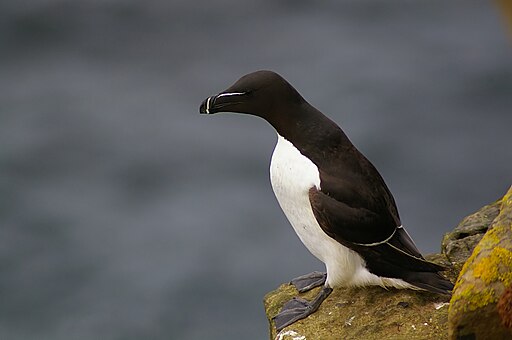Razorbill
Alca torda
Written by Chris Coyle
The Razorbill is a colonial seabird and is the closest living relative to the extinct great auk. Large numbers may be found following a winter storm.
HABITAT:
Razorbills live and feed in the subarctic waters of the Atlantic Ocean. Because they prefer to feed in waters less than 200 feet deep, Razorbills are often found over offshore shoals or ledges.
NESTING:
Nest sites are chosen carefully in areas which provide protection from predators such as crevices in cliffs and among boulders. Mating pairs often reuse the same nesting sites every year. Large colonies of nesting Razorbills can be found overlooking the ocean. A single egg is laid each year which is incubated by both parents. Razorbill chicks fling themselves out of the nest long before they have flight feathers. The male parent follows them and cares for the young until they are able to do so themselves.
BEHAVIOR:
Razorbills are migratory. They leave land and spend the entire winter in ocean waters. Females select a mate but often encourage competition between males before choosing their partner. After the male is chosen, the pair stay together for life.
FOOD:
Razorbills feed on mid-water schooling fish such as capelin, young cod, and herring. Crustaceans and marine worms may also be eaten.
PREDATORS:
Polar bears, Great Black-backed Gulls, Peregrine Falcons, Ravens, Crows and Arctic Foxes are all predators of Razorbills. Gulls and Ravens may attempt to feed on eggs.

